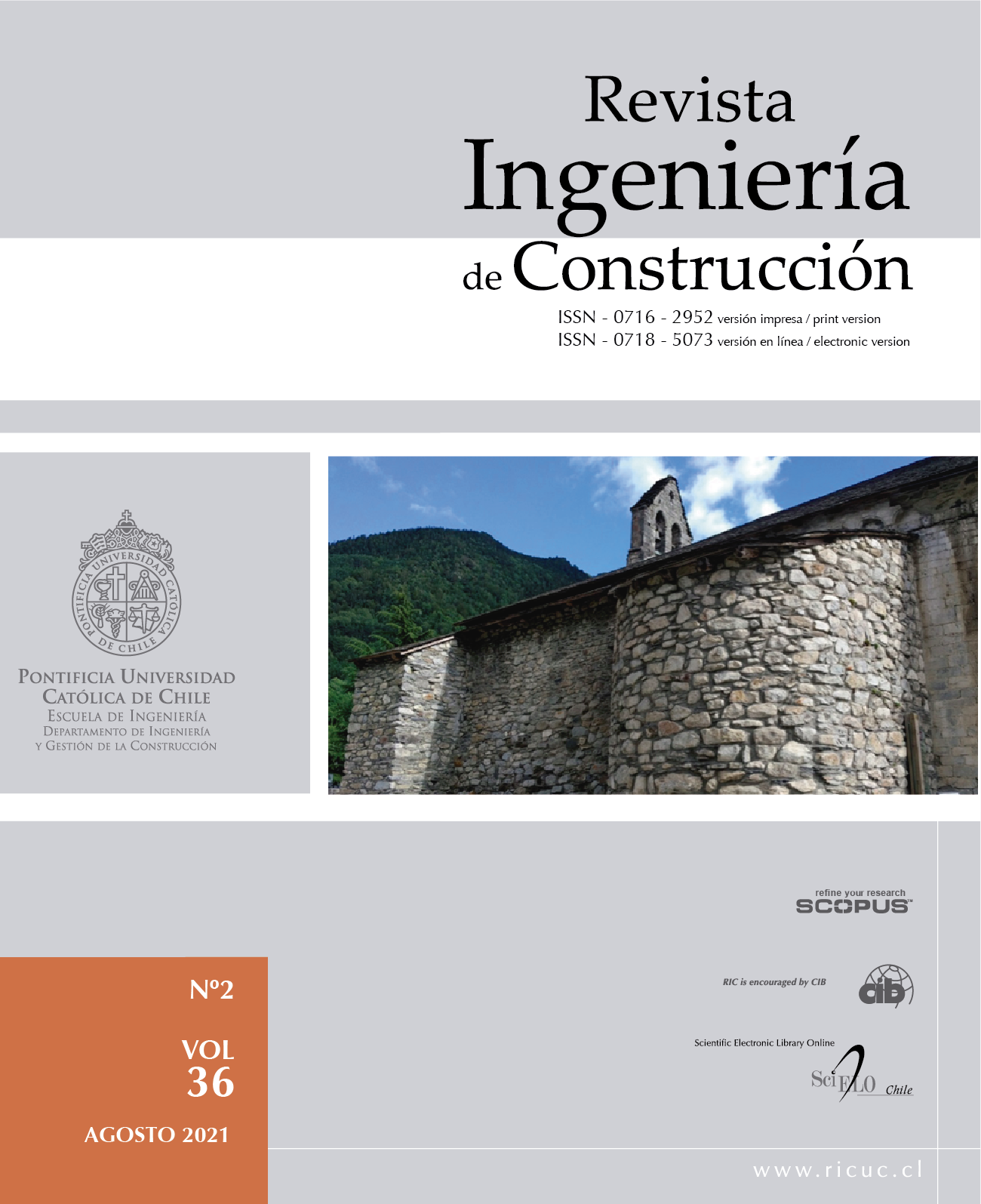Influence of an extensive green roof in the non-linear structural behavior of self – construction households
Keywords:
Green roof, probabilistic analysis, Opensees, Pushover, self-construction householdsAbstract
In recent years, ideas such as green roofs gained importance as an alternative for environmental adaptation of society to new ambient conditions. In Bogotá city, the roofs at popular neighborhood represent a potential area for their implementation. This present research discusses how the weight of a green roof impacts a self-construction dwelling unit from a structural capacity demand point of view. Green roof weight is a random variable whose normality was investigated through the Shapiro-Wilk goodness of fit. The magnification factors for this dead-like load come from the Nowak-Collins method using the confidence intervals on the mean weight value. The ATC-40 pushover methodology helped in finding the non-linear behavior of a controlled but similar structure as those found in the popular neighborhoods of Bogotá city. According to this methodology, damage caused on these structures due to seismic demand increases by the green roof incorporation. However, damage increase is a function of local soil conditions.Downloads
Downloads
Published
2021-08-31
How to Cite
Nuñez, F., & Contreras, O. (2021). Influence of an extensive green roof in the non-linear structural behavior of self – construction households. Revista Ingeniería De Construcción, 36(2), 157–172. Retrieved from https://revistadelaconstruccion.uc.cl/index.php/ric/article/view/49299
Issue
Section
Original Research


